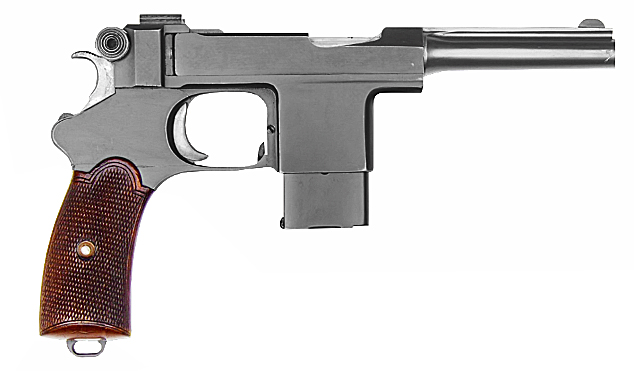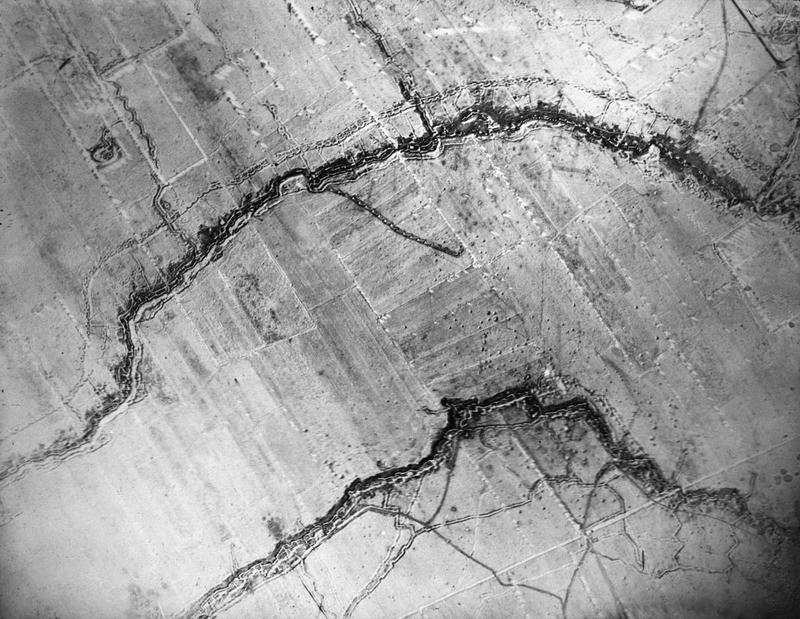|
Theodor Bergmann
Theodor Bergmann (May 21, 1850 in Sailauf – March 23, 1931 in Gaggenau)Erich Keyser; Heinz Stoob, ''Deutsches Städtebuch, Handbuch städtischer Geschichte'', Stuttgart, Kohlhammer Verlag, 1939. (page 239) was a German businessman and industrialist best remembered for the various revolutionary firearms his companies released. Like many entrepreneurs of the era, his activities centered on bicycles, and the nascent automobile. Armament was not Bergmann's primary focus, but the one he was most attracted to, which was the reason most of his pistols were manufactured under license once they were created. He is famous for creating automatic pistols, and their ammunition. Theodor Bergmann sold his automobile activity to Carl Benz in 1910. A new Bergmann model pistol was patented every year: *Bergmann 1893 *Bergmann 1894 *Bergmann 1895 *Bergmann 1896 *Bergmann 1897 a.k.a. Bergmann Pieper * Bergmann 1898 *Bergmann 1899 * Bergmann 1901 a.k.a. Bergmann Simplex * Bergmann Ma ... [...More Info...] [...Related Items...] OR: [Wikipedia] [Google] [Baidu] |
Sailauf
Sailauf is a municipality in the Aschaffenburg district in the ''Regierungsbezirk'' of Lower Franconia (''Unterfranken'') in Bavaria, Germany. It has a population of around 3,600. Geography Location The community lies in the area of the Spessart (range) known as ''Vorspessart'' near Aschaffenburg. It is located on the Sailaufbach, a tributary of the Laufach. Subdivisions Sailauf has two ''Ortsteile'': * (population 2013: 788) * Sailauf (2,861) In addition the hamlet is part of Sailauf. It consists of an industrial area near the Bundesautobahn 3 and the '. Moreover, the municipal territory includes 19 small exclaves to the northeast (see map) surrounded by the Sailaufer Forst. Neighbouring communities Sailauf borders on (from the north, clockwise): Blankenbach, Sommerkahl, the unincorporated area , Laufach, Bessenbach and Hösbach. History Sailauf is among the ''Vorspessart's'' oldest settlements. As early as 1089, the original parish church in the upper Aschaff vall ... [...More Info...] [...Related Items...] OR: [Wikipedia] [Google] [Baidu] |
Bergmann Mars
The Bergmann Mars was Theodor Bergmann's first successful military pistol design. The pistol was originally designed for the 7.63 Mauser cartridge, but was soon changed to the proprietary 9mm Bergmann cartridge. Military service The Mars was adopted by the Spanish government in 1905, however, later they were evidently not delivered or fielded. Prototype Mars pistols in .45 ACP were submitted for military testing by the United States in 1906, but were not selected for adoption. References *Shideler, Dan. 2008 ''Standard Catalog of Firearms''. Krause Publications Krause Publications is an American publisher of hobby magazines and books. Originally a company founded and based in Iola, Wisconsin, they relocated to Stevens Point, Wisconsin, in April 2018. The company was started by Chester L. Krause (19232 ..., 2008. . Semi-automatic pistols 1901–1909 {{Pistol-stub ... [...More Info...] [...Related Items...] OR: [Wikipedia] [Google] [Baidu] |
MP18
The MP 18, manufactured by Theodor Bergmann ''Abteilung Waffenbau'', was arguably the first submachine gun used in combat. It was introduced into service in 1918 by the German Army during World War I as the primary weapon of the ''Sturmtruppen'', assault groups specialized in trench combat. Although MP 18 production ended in the 1920s, its design formed the basis of most submachine guns manufactured between 1920 and 1960. History What became known as the " submachine gun" had its genesis in the early 20th century and developed around the concepts of fire and movement and infiltration tactics, specifically for the task of clearing trenches of enemy soldiers, an environment within which engagements were unlikely to occur beyond a range of a few feet. In 1915, the German Rifle Testing Commission at Spandau decided to develop a new weapon for trench warfare. An attempt to modify existing semi-automatic pistols (specifically the Luger and C96 Mauser) failed, as accurate aimed f ... [...More Info...] [...Related Items...] OR: [Wikipedia] [Google] [Baidu] |
Hugo Schmeisser
Hugo Schmeisser (24 September 1884 – 12 September 1953) was a German developer of 20th century infantry weapons. Schmeisser was born in Jena, Thuringia. His father, Louis Schmeisser (1848–1917), was one of the best-known weapons designers in Europe. The life and work of Hugo Schmeisser mostly took place in the weapons manufacturing city of Suhl, Thuringia. Before and during World War I The submachine guns of Theodor Bergmann are closely connected with its name recognition and weapons production in the time leading up to the First World War. Schmeisser also received his fundamental training in weapons technology at Bergmann, where 7.63 mm and 9 mm machine gun rounds were being researched. He remained in Suhl during World War I because of the importance of his expertise in machine gun technology. Before and during World War II Manufacturing regulations in the Treaty of Versailles (June 28, 1919) forbade Germany from developing heavy machine guns, but permitted ... [...More Info...] [...Related Items...] OR: [Wikipedia] [Google] [Baidu] |
Mauser C96
The Mauser C96 (''Construktion 96'') is a semi-automatic pistol that was originally produced by German arms manufacturer Mauser from 1896 to 1937. Unlicensed copies of the gun were also manufactured in Spain and China in the first half of the 20th century. The distinctive characteristics of the C96 are the integral box magazine in front of the trigger, the long barrel, the wooden shoulder stock, which gives it the stability of a short-barreled rifle and doubles as a holster or carrying case, and a grip shaped like the handle of a broom. The grip earned the gun the nickname "broomhandle" in the English-speaking world, and in China the C96 was nicknamed the "box cannon" () because of its rectangular internal magazine and because it could be holstered in its wooden box-like detachable stock.Wilson (2009), p. 100. With its long barrel and high-velocity cartridge, the Mauser C96 had superior range and better penetration than most other pistols of its era; the 7.63×25mm Mauser ca ... [...More Info...] [...Related Items...] OR: [Wikipedia] [Google] [Baidu] |
Luger Pistol
The Pistole Parabellum—or Parabellum-Pistole (Pistol Parabellum), commonly known as just Luger or Luger P08 is a toggle-locked recoil-operated semi-automatic pistol. The Luger was produced in several models and by several nations from 1898 to 1949. The design was first patented by Georg Luger. It was meant to be an improvement of the Borchardt C-93 pistol, and was initially produced as the ''Parabellum Automatic Pistol, Borchardt-Luger System'' by the German arms manufacturer Deutsche Waffen und Munitionsfabriken (DWM).Datig, Fred A., ''The Luger Pistol'', Gun Digest, 1957 ed., Chicago Illinois: Edward Keogh Co. Inc. (1956) pp. 164-165 The first production model was known as the ''Modell 1900 Parabellum''. It was followed by the "Marinepistole 1904" for the Imperial German Navy. The Luger was officially adopted by the Swiss military in 1900, the Imperial German Navy in 1906 and the German Army in 1908. The Luger was the standard service pistol of Switzerland, Portugal, th ... [...More Info...] [...Related Items...] OR: [Wikipedia] [Google] [Baidu] |
Trench Warfare
Trench warfare is a type of land warfare using occupied lines largely comprising Trench#Military engineering, military trenches, in which troops are well-protected from the enemy's small arms fire and are substantially sheltered from artillery. Trench warfare became archetypically associated with World War I (1914–1918), when the Race to the Sea rapidly expanded trench use on the Western Front (World War I), Western Front starting in September 1914.. Trench warfare proliferated when a Weapons of World War I, revolution in firepower was not matched by similar advances in mobility (military), mobility, resulting in a grueling form of warfare in which the defender held the advantage. On the Western Front in 1914–1918, both sides constructed elaborate trench, underground, and dugout systems opposing each other along a front (military), front, protected from assault by barbed wire. The area between opposing trench lines (known as "no man's land") was fully exposed to artillery ... [...More Info...] [...Related Items...] OR: [Wikipedia] [Google] [Baidu] |
Spandau
Spandau () is the westernmost of the 12 boroughs () of Berlin, situated at the confluence of the Havel and Spree rivers and extending along the western bank of the Havel. It is the smallest borough by population, but the fourth largest by land area. Overview Modern industries in Spandau include metalworking, and chemical and electrical factories. BMW Motorrad's Spandau factory made all BMW's motorcycles from 1969 until final assembly plants were added in Rayong, Thailand in 2000, and Manaus, Brazil in 2016. , Spandau's seat of government, was built in 1913. Other landmarks include the Renaissance-era Spandau Citadel, the 1848 St. Marien am Behnitz Catholic church designed by August Soller, and Spandau arsenal. That arsenal's Spandau machine gun inspired the slang ''Spandau Ballet'' to describe dying soldiers on barbed wire during the First World War, and later was applied to the appearance of Nazi war criminals at Spandau Prison. In 1979, the English New Romantic band ... [...More Info...] [...Related Items...] OR: [Wikipedia] [Google] [Baidu] |
Bergmann MG 15nA Machine Gun
The Bergmann MG 15nA was a World War I light machine gun produced by Germany starting in 1915. It used 100- and 200-round belts and utilized a bipod, which allowed the weapon to be mounted on a flat surface for more accurate firing. It was briefly put back into service during the closing months of World War II in Europe by German Volkssturm units who lacked modern equipment and were little more than suicide squads meant to mount a hopeless last defense. Nazi Germany was using any weapon they had available during the last part of the war due to failing production and resupply. Design and development The Bergmann gun used a lock system patented by Theodor Bergmann in 1901 along with the short recoil principle of operation. The locking system, in which a cam moves a lock vertically in the weapon, was not dissimilar to the Browning machine gun designs. The original design, borrowing from the 1910 pattern, was a heavy ground-based weapon fitted with a water-cooling jacket. The weapon ... [...More Info...] [...Related Items...] OR: [Wikipedia] [Google] [Baidu] |





